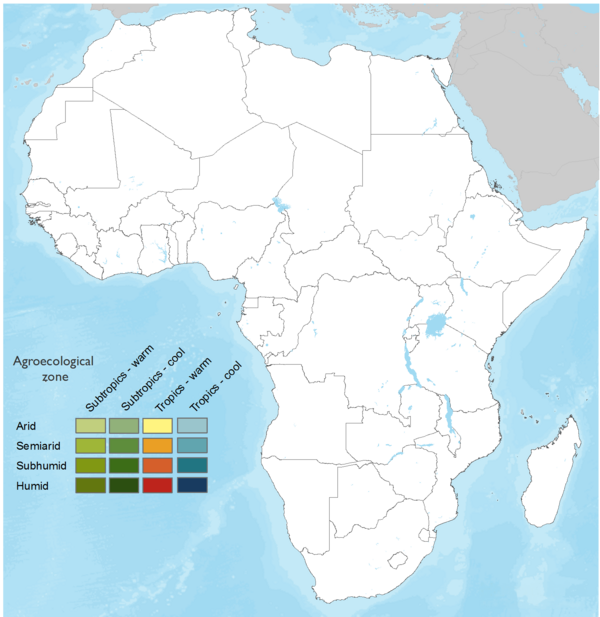

Powering Nutrition, Productivity, and Resilience!
Nyota is an improved, open-pollinated common bean variety developed from the red speckled “Nyayo” line. It is biofortified with iron and zinc to combat micronutrient deficiencies, particularly among children and women. The variety matures in 60–70 days, enabling up to two or more harvests per year and offering a yield range of 1,400–2,000 kg/ha, which is higher than traditional varieties. Nyota exhibits high drought tolerance and performs well across a range of agroecological zones, supporting national goals for climate-smart agriculture. Its adoption contributes to increased smallholder productivity, enhanced household nutrition, and resilient rural economies, aligning with national agricultural and public health strategies.
This technology is not yet validated.
Adults 18 and over: Positive high
The newly improved bean variety increases labor income at farm levels
The poor: Positive medium
Nyota beans are rich in iron and other nutrients, helping to combat malnutrition, which is more common among the poor. This increases food availability at the household level, helping poor families become more food secure and less reliant on food purchases or aid. Because Nyota has a shorter maturity period, it allows for multiple harvests per year, further boosting income opportunities
Under 18: Positive high
Iron deficiency leads to anaemia which affects an estimated 43% of Kenyan children under five years old, so the improved bean variety has great impact since it is enriched with iron.
Women: Positive high
Nyota is a high-iron bean variety, which helps address iron deficiency, a common issue among women and children. By incorporating Nyota into family meals, women are better able to meet the nutritional needs of their households, especially during pregnancy and breastfeeding. Higher yields and shorter maturity periods make Nyota a more reliable crop, allowing women farmers to harvest earlier and potentially grow multiple crops per year. Nyota has been bred for drought tolerance and disease resistance, which lowers the labor and input costs traditionally borne by women
Climate adaptability: Highly adaptable
The variety has short maturity (60 -75 days) and also it is drought tolerant which increases its resilience to harsh weather conditions
Farmer climate change readiness: Significant improvement
Farmers are able to get produce even when the rain is minimal because the variety matures early.
Biodiversity: Positive impact on biodiversity
Nyota characteristics of disease tolerance impacts positively to the ecosystem due to minimal chemicals are used
Carbon footprint: Much less carbon released
Nyota's resistance to pests and diseases leads to less need for chemical pesticides and fertilizers. Early maturing varieties reduce the length of the growing season, which can lower overall field emissions, particularly nitrous oxide from soils.
Environmental health: Greatly improves environmental health
Nyota is disease tolerant, so amount of chemical used by farmers to control diseases.
Soil quality: Improves soil health and fertility
Nyota contributes to soil quality by their efficient nutrient uptake and contribute to soil health by fixing nitrogen in the soil, a process that enriches the soil with essential nutrients.
Water use: Much less water used
Nyota bean's ability to thrive in drier conditions enables it utilize minimal water, promoting Sustainable water management.
The Nyota Common Bean variety offers a promising solution to the environmental and socio-economic challenges faced in bean production across Sub-Saharan Africa. By providing farmers with a high-yielding, drought-tolerant, and fast-maturing bean that is rich in iron and zinc, Nyota contributes to improved food security, enhanced nutrition, and increased resilience to climate change.
To integrate this technology into your project, consider the following activities and prerequisites:
For enhanced productivity and resilience, it is recommended to integrate Nyota with complementary technologies such as soil fertility management practices, water conservation techniques, and pest and disease management strategies.
To successfully implement Nyota in your country, collaboration with KARLO, seed companies, and local extension services is essential to ensure seed availability, technical support, and effective dissemination.
Every USD invested returns USD 4.74 net income.
Cost per season per hectare
Revenue per season per hectare
Net income per season per hectare
ROI per season
Open source / open access
Scaling Readiness describes how complete a technology’s development is and its ability to be scaled. It produces a score that measures a technology’s readiness along two axes: the level of maturity of the idea itself, and the level to which the technology has been used so far.
Each axis goes from 0 to 9 where 9 is the “ready-to-scale” status. For each technology profile in the e-catalogs we have documented the scaling readiness status from evidence given by the technology providers. The e-catalogs only showcase technologies for which the scaling readiness score is at least 8 for maturity of the idea and 7 for the level of use.
The graph below represents visually the scaling readiness status for this technology, you can see the label of each level by hovering your mouse cursor on the number.
Read more about scaling readiness ›
Semi-controlled environment: prototype
Used by some intended users, in the real world
| Maturity of the idea | Level of use | |||||||||
| 9 | ||||||||||
| 8 | ||||||||||
| 7 | ||||||||||
| 6 | ||||||||||
| 5 | ||||||||||
| 4 | ||||||||||
| 3 | ||||||||||
| 2 | ||||||||||
| 1 | ||||||||||
| 1 | 2 | 3 | 4 | 5 | 6 | 7 | 8 | 9 | ||
|
Cost of the investment Sum of all fixed and operational expenses. |
USD 986 per season per hectare |
|---|---|
|
Gross revenue Sum of all income before subtracting costs. |
USD 5,426 per season per hectare |
|
Net income Gross revenue minus total cost. |
USD 4,441 per season per hectare |
|
Return on investment Percentage of income earned for each dollar invested, calculated as: (income ÷ cost of investment) × 100 |
474 % per season |
| Country | Testing ongoing | Tested | Adopted |
|---|---|---|---|
| Kenya | –No ongoing testing | Tested | Adopted |
This technology can be used in the colored agro-ecological zones. Any zones shown in white are not suitable for this technology.


| AEZ | Subtropic - warm | Subtropic - cool | Tropic - warm | Tropic - cool |
|---|---|---|---|---|
| Arid | – | – | – | – |
| Semiarid | – | – | – | – |
| Subhumid | – | – | – | |
| Humid | – | – | – | – |
Source: HarvestChoice/IFPRI 2009
The United Nations Sustainable Development Goals that are applicable to this technology.

The improved bean variety increases the productivity and income of farmers and other value chain actors.

The improved bean variety increases farm productivity and subsequently improves food and nutrition security.

The improved bean variety increases the nutritional value by adding iron and zinc to what people already eat

The improved bean variety increases the participation of both men and women in farm production.
Land Preparation
Sowing
Crop Management
Storage
Harvesting
Last updated on 29 October 2025